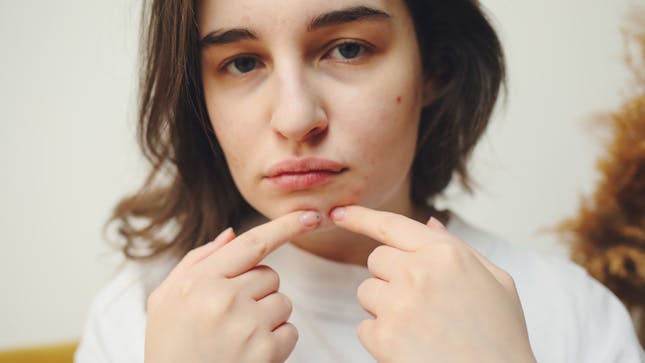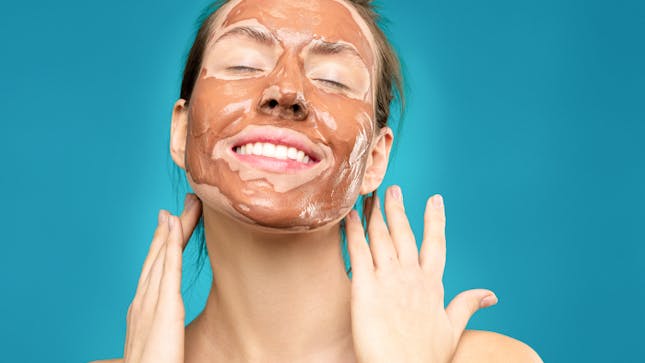Acne scars are a common concern for many, affecting both skin texture and overall appearance. In recent years, advancements in aesthetic medicine have introduced new approaches to treating these scars, focusing on targeted and minimally invasive techniques.
Traditional treatments, such as chemical peels and deep laser resurfacing, remain options, but newer methods offer alternative approaches that may involve less downtime and different mechanisms of action. Techniques such as fractional laser therapy, microneedling, and energy-based devices are now being used to address various scar types with adjustable intensity and precision.
This article explores some of the developments in acne scar treatments and how they are being applied in clinical settings.
Advances in Acne Scar Treatment Technology
Acne scars can be persistent and may require targeted treatments to improve skin texture and appearance. Advancements in laser technology, microneedling, and energy-based devices have expanded the available treatment options. These approaches aim to address different types of acne scars while considering factors such as skin type, downtime, and potential risks.
1) Fractional Laser Resurfacing
Fractional laser resurfacing is a widely used treatment that applies controlled laser energy to the skin. CO2 and Er:YAG fractional lasers create micro-columns of thermal injury, which can stimulate collagen production while leaving the surrounding tissue intact.
Considerations:
- It may have a shorter recovery time compared to fully ablative lasers.
- Intensity can be adjusted to target different scar depths.
- Used to improve skin texture and tone.
2) Radiofrequency Microneedling (RF Microneedling)
RF microneedling combines traditional microneedling with radiofrequency energy, which generates heat in the skin’s deeper layers. Research suggests that RF microneedling may be beneficial for atrophic scars, including ice-pick, boxcar, and rolling scars.
Key Features:
- It can be used on a range of skin types, including darker skin tones.
- It may lower the risk of post-inflammatory hyperpigmentation compared to some laser treatments.
- Investigated for its role in improving skin laxity and scar depth.
3) Picosecond Lasers
Initially developed for tattoo removal, picosecond lasers are now being explored for their potential in acne scar treatment. These lasers deliver ultra-short pulses of energy that break down scar tissue to encourage elastin production.
Potential Advantages:
- It may reduce the risk of post-inflammatory hyperpigmentation.
- Treatment sessions are generally shorter than some traditional laser procedures.
- Used for both textural and pigmented acne scars.
4) Hybrid Laser Systems
Hybrid laser systems, such as the Halo laser, incorporate both ablative and non-ablative wavelengths in one session. This combination allows treatment at multiple skin depths.
Considerations:
- Targets deeper scar tissue while leaving some surface layers intact.
- Recovery time may be shorter than that of fully ablative laser treatments.
- It can be used for a range of scar types, including mixed scars.
| Technology | Best for | Downtime | Key Consideration |
| Fractional Laser Resurfacing | Deep scars, uneven texture | Moderate | Stimulates collagen remodeling |
| RF Microneedling | Ice-pick, boxcar, rolling scars | Minimal | It may be suitable for darker skin tones |
| Picosecond Lasers | Pigmented and atrophic scars | Minimal | Delivers precise, short-pulse energy |
| Hybrid Laser Systems | Mixed scars, multi-layer treatment | Short to moderate | Combines ablative and non-ablative effects |
The effectiveness of any acne scar treatment depends on factors such as scar type, skin type, and individual response. Some treatments may require multiple sessions, and potential side effects—such as redness, swelling, or pigmentation changes—should be discussed with a qualified practitioner before undergoing any procedure.
Trending Minimally Invasive Acne Scar Treatments
In recent years, there has been increasing interest in minimally invasive acne scar treatments, particularly among individuals seeking options that require little to no downtime. As a result, clinics are now offering advanced acne scar treatments with minimal downtime to accommodate different patient needs.
Here are some commonly used minimally invasive treatments:
1) Chemical Peels
Chemical peels are frequently used to address superficial acne scars by exfoliating the skin’s outer layers. Formulations containing alpha-hydroxy acids (AHAs) or trichloroacetic acid (TCA) promote skin renewal by inducing controlled peeling.
Considerations:
- Peel strength can be adjusted based on skin type and scar severity.
- Some formulations now include growth factors that may aid in post-treatment healing.
- Chemical peels can be combined with microneedling for additional collagen stimulation.
2) Subcision with Fillers
Subcision is a procedure that involves inserting a fine needle under the skin to break fibrotic bands responsible for tethered scars. In some cases, dermal fillers such as hyaluronic acid are added to restore volume to depressed scars.
Key Points:
- Often used for rolling scars and tethered atrophic scars.
- Fillers may provide immediate volume restoration, though effects depend on the type of filler used.
- Downtime is generally minimal, but mild bruising or swelling may occur post-procedure.
3) Microneedling with Serums or Platelet-Rich Plasma (PRP)
Microneedling involves controlled micro-injuries that stimulate collagen production. Some clinics combine microneedling with serums or PRP, which contains growth factors that may aid in healing.
Considerations:
- Generally considered safe for various types of skin, including darker skin tones.
- PRP has been studied for its potential to reduce inflammation and enhance wound healing.
- It may be used in conjunction with growth factors or exosomes for additional effects.
4) Dermal Stamping with Growth Factors
Dermal stamping uses a precision micro-delivery device to introduce bioactive compounds, such as growth factors deeper into the skin.
Potential Benefits:
- It may offer more precise delivery compared to traditional microneedling.
- It can be adjusted to target specific scarred areas while minimising impact on surrounding tissue.
- Used to promote collagen production and skin remodelling.
5) Energy-Based Therapies (IPL & Low-Level Laser Therapy)
Intense pulsed light (IPL) and low-level laser therapy (LLLT) are non-ablative treatments that use light energy to address early-stage acne scars and post-inflammatory erythema.
Key Points:
- IPL is often used for pigmented or vascular scars, targeting redness and uneven skin tone.
- LLLT has been investigated for its role in stimulating cellular repair and reducing inflammation.
- These treatments do not remove skin layers, which may result in minimal to no downtime.
Results from these minimally invasive procedures depend on factors such as scar type, skin response, and treatment protocol.
Tailored Treatment Plans
Acne scar treatments are increasingly moving away from a one-size-fits-all approach. Today, aesthetic clinics in Singapore and globally are focusing on personalised treatment plans that take into account skin type, scar severity, and patient preferences. Customised treatments may help improve results while reducing the risk of complications.
1) Comprehensive Skin Analysis
Accurate assessment of acne scars is a key step in treatment planning. Clinics now use 3D imaging, high-resolution skin scanners, and other diagnostic tools to evaluate scar depth, skin texture, and pigmentation.
Potential Benefits of Advanced Skin Analysis:
- Helps differentiate between atrophic, hypertrophic, and mixed scars.
- Allows for objective tracking of skin changes over multiple sessions.
- It may assist in selecting appropriate treatments based on scar characteristics.
2) Combining Modalities for a Targeted Approach
A combination of treatments is often used to address different aspects of acne scarring. This approach may help target scars at multiple skin layers and improve overall skin texture.
Example of a Multimodal Treatment Plan:
For individuals with rolling and boxcar scars, a multi-step treatment plan may involve:
- First Session: Subcision to release fibrotic bands beneath the scars.
- Second Session: RF Microneedling to stimulate collagen production and improve skin texture.
- Third Session: Fractional CO2 Laser to refine the skin’s surface.
Each session is typically spaced a few weeks apart for the skin to heal between treatments.
3) Consideration of Skin Type and Ethnicity
Different skin types respond differently to acne scar treatments. In Singapore’s diverse population, darker skin tones (Fitzpatrick IV-VI) may have a higher risk of PIH, requiring careful selection of treatment modalities.
Common Adjustments Based on Skin Type:
- Darker skin tones: RF microneedling or IPL may be preferred over ablative lasers to reduce the risk of pigmentation changes.
- Lighter skin tones: A wider range of laser resurfacing treatments may be considered.
- Sensitive skin: Lower energy settings or non-ablative approaches may be used to minimise irritation.
4) Patient Preferences and Goals
Treatment selection is also influenced by patient-specific factors such as desired downtime, long-term skin goals, and tolerance for invasive procedures.
| Factor | Considerations | Potential Adjustments |
| Skin Type | Sensitivity or pigmentation risk | Non-ablative lasers, RF microneedling |
| Scar Severity | Depth and type of scars | Subcision, laser resurfacing |
| Lifestyle Needs | Limited recovery time | Chemical peels, microneedling |
| Long-Term Goals | Gradual skin improvement | Combination treatments |
Tailoring acne scar treatments to the individual allows for more precise intervention. By considering skin characteristics, scar type, and patient preferences, clinics can create treatment plans that align with medical best practices and patient expectations.
Combining Treatments for Maximum Effect
Acne scars often vary in depth, shape, and severity, requiring different treatment approaches. Instead of using a single modality, combining multiple treatments may help address different scar types more effectively by targeting various layers of the skin. This approach is commonly used in clinical settings to optimise treatment outcomes based on individual scar characteristics.
- Rolling scars: Often treated with RF microneedling or subcision to stimulate collagen production and release tethered scars.
- Boxcar scars: May require laser resurfacing to smooth out sharp edges.
- Ice-pick scars: Frequently addressed with TCA CROSS, a chemical reconstruction technique.
- Hypertrophic scars: Treated with steroid injections or laser therapy to reduce thickness.
By combining these treatments in a structured manner, practitioners aim to address multiple scar patterns while improving skin texture and appearance.
Commonly Used Treatment Combinations
| Combination | Purpose | Considerations |
| Subcision + RF Microneedling | Releases tethered scars and stimulates collagen | It may improve skin smoothness with minimal downtime |
| Chemical Peels + Laser Resurfacing | Exfoliates surface and refines scar edges | It may reduce scar depth and improve skin brightness |
| PRP + Fractional Laser | Promotes healing and collagen remodelling | Could support faster recovery and enhanced skin repair |
| TCA CROSS + Dermal Fillers | Targets deep ice-pick scars and restores volume | May address both scar depth and surface texture |
Combining treatments requires careful planning, which includes the following considerations:
- The type and severity of scars influence the selection of treatment combinations.
- Patient skin type affects the choice of energy-based treatments, as darker skin tones may be more prone to post-inflammatory hyperpigmentation (PIH).
- The interval between treatments allows the skin to recover and respond to therapy effectively.
Combination approaches continue to be an area of ongoing research, with studies evaluating the long-term effects of layering different modalities. Treatment outcomes vary based on individual skin characteristics and adherence to post-procedure care.
Conclusion
Acne scar treatment continues to evolve with a range of minimally invasive, laser-based, and combination approaches that target different scar types and skin characteristics. The treatment depends on several factors, including scar severity, skin type, and individual recovery preferences.
A customised approach—which may involve skin analysis, layering multiple treatment modalities, and considering patient-specific factors—can help practitioners develop structured treatment plans. The timing and sequence of procedures are also key considerations, as certain treatments require healing periods between sessions to minimise potential side effects.
Ongoing research is focused on optimising treatment protocols, minimising downtime, and improving long-term outcomes. Individuals considering acne scar treatments should consult with a qualified practitioner to discuss available options, expected recovery, and potential risks based on their specific skin condition.






